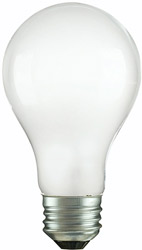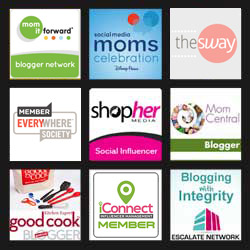
NBC News has a new article on the ban which states that 6 out of 10 people aren’t aware that these bulbs will no longer be made:
The Jan. 1 deadline to end production of 60- and 40-watt incandescent light bulbs is fast approaching, but most Americans aren’t even aware that their traditional light sources will soon become a rare commodity, according to one consumer survey.
With a major shift on the horizon, some Americans are doing their best to take stock of the situation. It’s still perfectly legal to buy incandescent light bulbs as long as supplies last — companies just can’t import or manufacture any new ones. Osram Sylvania’s survey found that 30 percent of those who are aware of the phase-out are planning to stockpile the leftover light bulbs.
I’m among the stockpilers. I have several large boxes filled with 40-watt and 60-watt bulbs, and I did the same thing when the 100-watt bulbs were banned awhile back. I wrote an article about the ban back in June of this year, which I’ll republish below for you too.
If you wish to stock up:
Through 12/31, 4-packs of Essential Everyday 40w and 60w light bulbs are .88 at Jewel – just .22 per bulb! (.38 per 4-pack if you use the $1-off-2 coupon from the 12/8 RP!)
Amazon has pretty good prices on incandescents too:
– $8.99 SYLVANIA 60-Watt A19 Household Bulb, 24 Pack – that’s about .37 per 60-watt bulb.
– $1.24 Sylvania 40-Watt A19 Soft White Incandescent Bulb 4 Pack – that’s about .31 per 40-watt bulb
Why am I stocking up on incandescent bulbs?
I personally do not like the compact fluorescents. I realize there is an energy savings over traditional bulbs, but disposing of them is problematic as they contain mercury and can’t be thrown away. For me, they never seem to last as long as the package says they’re supposed to. I’ve bought a few when they were free with coupons but I’ve yet to get more than two years out of any bulb. I know this because I’ve dated the ballasts with a Sharpie when I put the bulbs in.
As it turns out, if you use the bulb in an enclosed fixture or install it so that the base of the bulb is above the glass part of the bulb, with the bulb part hanging down, it severely limits their life. Turning the bulb off and on also reduces its lifespan. (So, anything other than a bulb-up, vertical installation with no fixture, no shade and no ‘off’ switch, will result in lowered performance. How many light fixtures do you have at home which position the bulbs in that “optimal” setting, and stay on all the time?)
Now, after I share my aunt’s story, you may also want to begin stocking up on them too.
My aunt sews for a living, and over the summer her employer switched the bulbs in the lamps over her workstation and her co-workers stations with CFLs. As the days led to weeks, she and her co-workers noticed their hands and arms were turning red, rashy and itchy. She suspected that the lights hanging over their sewing machines were in close enough proximity to their hands and arms to burn them.
Her doctor confirmed that she was getting a sunburn from the bulbs. The Health Protection Agency notes that “Open CFLs emit high levels of UV-C radiation, which is more damaging than UV-A or UV-B radiation. Continual exposure to open CFLs as a result of close-range tasks or desk lighting conditions may cause reddening of the skin, similar to a sunburn. The Health Protection Agency recommends no more than one hour of direct exposure daily if other options for close-range lighting are not available.”
As more research and studies come out, it turns out that these bulbs are not nearly as safe as we may have been led to believe. A New York study notes that every bulb tested in the study emitted ultraviolet rays “so strong they can actually burn your skin and skin cells.”
I’m also alarmed by the EPA’s instructions on what to do if a bulb breaks:
If clothing or bedding materials come in direct contact with broken glass or mercury-containing powder from inside the bulb that may stick to the fabric, the clothing or bedding should be thrown away. Do not wash such clothing or bedding because mercury fragments in the clothing may contaminate the machine and/or pollute sewage.
How dangerous are they if washing clothing won’t remove the mercury, and the EPA is concerned about lightbulb waste polluting sewage? NBC News says the amount of mercury in one CFL bulb “is enough to contaminate up to 6,000 gallons of water beyond safe drinking levels.” No thanks.
You’re free to buy and use any light bulbs you want. But as my readers know, I sometimes get on my soapbox about things I feel strongly about..! I feel strongly enough about this to share it with you, and my aunt’s experience was the tipping point for me. With LED bulbs coming down in price, I hope we have better and safer bulb options in the future — but I’ve now got a lot of incandescent bulbs on hand, just in case.










Susiem68 says
What about oven bulbs and appliance bulbs? Not sure I would want a mercury filled fluorescent in my oven and not sure it would fit. Tried a fluorescent in my fridge and it does not fit. Also all of my pretty decorative chandelier bulbs. I am going to have to see if they are effected. Not happy. Will have to go to LED as I have medical sues and can not be exposed to prolonged fluorescent.
maggie says
Jill, you wrote that the sale at Jewel goes through 12/21, but in your other post it says it’s 12/31. I thought you might want to change this.
I’m glad I still have time to get some!! I hope they’re not all sold out by the time I get there though…
Outlander says
That’s funny I was just thinking about going to Menards tomorrow to stock up and use one of those old $5/$50 Qs and there is 11% rebate too.
hwendt12 says
of the health concerns. I may have to rethink the bulbs we use here, too-thanks for the important info, Jill!
Grandma D says
Jill, thanks for the reminder on the light bulbs. I really need to start some major stockpiling on regular bulbs. I have Lupus and the compact fluorescents make me break out. Wondering what people like me will do in 10 years when no more regular bulbs can be found, we will have to be applying sun screen every 2 hours inside our homes! Why must the government interfere so much?
palatino says
Great article Jill and thank you for the reminder to stock up on more bulbs. Here is another thing you might not know. The CFL twisty bulbs also create a lot of interference with radio waves. We have a small AM radio in our kitchen that we use to listen to the news in the morning and when we put some CFLs in the kitchen we couldn’t get our stations anymore. Moving the radio closer to the bulbs creates tons of static, and moving the radio away makes the station come in clearer. We put regular bulbs back in the kitchen and suddenly were able to get all the stations again!
Morimoto says
Longtime reader and first time poster. Glad to see you share the same mindset on this. I am tired of hearing about how light bulbs “waste heat.” They don’t realize some of us want these bulbs for the heat! I put a light fixture under the corner of my deck that has a 60 watt bulb in it for the winter right under the deck floor. My dog’s bowl sits right above it on the deck and that light keeps his water from freezing all winter. A CFL or LED bulb won’t do that.
I have several 100 watt bulbs in my shed for the same reason as they heat it up nice when I am in there working on something.
Also think about this. The government says this is done because bulbs “waste heat.” No, that heat goes into your house. Our house has electric baseboard heat. So, if the heat comes from a light bulb or from the wall, we are not wasting heat. If we had no incandescent bulbs the heaters would work harder to create the same heat. We pay the electric bill either way, dummies.
sjw1314 says
anyways I am at the end of my stockpile and I have 2 bulbs that are 26 watt for the 100 replacement. Can I use these in the 60 watt lights? I know they are 26 watt; but they are for replacing the 100, so I want to make sure they’re safe to use. TIA
Coupon Maven says
https://www.dailymail.co.uk/news/article-2546363/The-great-LED-lightbulb-rip-One-four-expensive-long-life-bulbs-doesnt-like-long-makers-claim.html
This article notes that a British consumer watchdog group tested several brands of LED bulbs and found that about 25% of them failed before 6,000 hours’ use (they are supposed to last around 25,000 hours.)